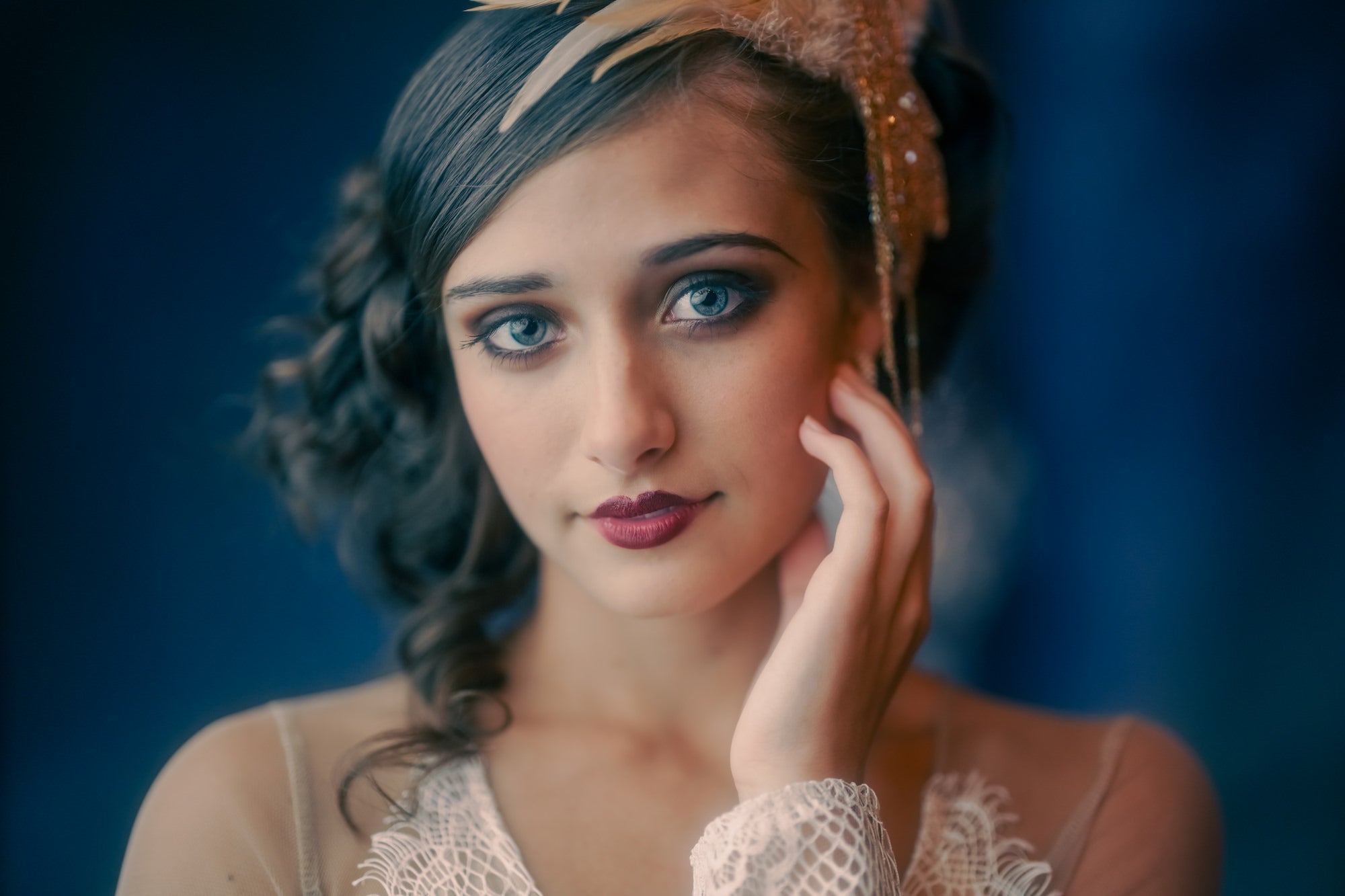Portrait photography is an art form that combines technical skill with a deep understanding of human expression. A good portrait doesn’t just show a photo of someone in frame, it tells a story. There are many ways to refine this – and it all involves more than just pressing the shutter. Check out five crucial tips below to help you elevate your portrait game.
A good portrait doesn’t just show a photo of someone in frame, it tells a story. Check out these five tips to help you level up your portrait game.
1. Master Lighting Techniques
Lighting is the cornerstone of portrait photography. Natural light can be beautiful and soft, especially during the golden hour – just after sunrise or before sunset. However, mastering artificial lighting techniques can provide more control over your shots. Use a combination of key lights, fill lights, and backlights to add depth and dimension to your portraits. By working your way up to a three-light setup, you can have a great foundation in lighting – one that Sony Artisan and portrait pro Scott Robert Lim says you can even establish a career on. “When you can master the main light on your subject with some nice separation light on the hair, and then a nice background that's nicely lit and perfectly exposed, if you could do that basic three-light setup, you can do so much just understanding that,” he says. Get more of the pro’s advice in 10 Pro Tips To Master Your Next Studio Session and Try This Portrait Pro’s Magic Formula For Soft Lighting.
If you’re getting into studio portraiture and you’re struggling to find out how to light your subjects, another great resource is this video from Sony Artisan and portrait pro Miguel Quiles. Watch as he walks through his main light, backlight and constant light setup and how he dials in his settings. Once you’re comfortable with lighting techniques, you can take your portrait shoots to a whole new level.
2. Use The Right Lens
When it comes to portraiture, people want to see a certain level of quality and a pleasing perspective – in fact, they expect it. A good portrait is sharp before you bring it into post-production, and doesn’t try to rely on filters and sharpening tools after the fact. To create a high-quality portrait you need high-quality gear, and one of the most impactful upgrades you can make in portrait photography is investing in the right lens. Lenses such as the Sony 50mm f/1.4 G Master, the new Sony 85mm f/1.4 G Master II or the Sony 135mm f/1.8 G Master offer exceptional sharpness and beautiful bokeh and the right perspective. While portrait photographers do go wider than 50mm and more telephoto than 135mm, in general the 50-135mm range is renowned for making people look their best.
A good portrait lens allows you to achieve a shallow depth of field, which helps isolate your subject from the background and creates a pleasing, professional look. These lenses also tend to have larger apertures (like f/1.8, f/1.4, or f/2.8), which lets in more light and enables faster shutter speeds—crucial for capturing sharp, well-exposed portraits. If you’re ready for an upgrade, the newest second-generation model in the G Master lineup – the Sony 85mm f/1.4 G Master II – is designed to take full advantage of the latest tech in Sony Alpha cameras to deliver the highest quality portraiture. Sony Artisan Brian Smith has used the new lens for portraits and says, "Upgrading to Sony’s latest XD linear AF motors makes the Sony 85mm f/1.4 G Master II focus virtually instantaneous. The camera locks on the subject’s eye and never lets go. Focus is dead-on frame after frame after frame.”

Photo by Brian Smith. Sony Alpha 7CR. Sony 85mm f/1.4 G Master II. 1/1600-sec., f/1.4, ISO 100

Photo by Brian Smith. Sony Alpha 7CR. Sony 85mm f/1.4 G Master II. 1/640-sec., f/1.4, ISO 100
3. Focus On Composition & Framing
Composition, framing and focus can make or break a portrait. You don’t want people to struggle with where they should be looking within your images. You want it to be subtly obvious with the proper composition, exposure and depth of field to guide your viewer through your image. A good technique is to put specific focus on your subject’s eyes, and then look throughout the rest of the frame to ensure there isn’t anything taking away from that focus. Or the opposite, maybe there is something you can include in the frame that will draw more attention to what you want to highlight in the image.
Don’t be afraid to experiment with different angles and perspectives – shooting slightly above or below eye level can create interesting effects and emphasize different aspects of your subject’s personality. Getting a variety of compositions and expressions during a portrait shoot will help you compare and see what works best.

Photo by Scott Robert Lim. Sony Alpha 9 III. Sony 16-35mm f/2.8 G Master II. 1/100-sec., f/2.8, ISO 200
4. Engage With Your Subject
To capture powerful portraits you need your subject to be comfortable, and to make that happen you must work on your communication skills. Portrait pro Scott Robert Lim says, “Your goal is that you want to make your subject feel comfortable and be expressive with their emotions. And if you don't know how to do that, you could just literally ask them questions about themselves, and then inevitably you can see what they like talking about. Maybe it's their kids or maybe it's their career, or maybe it's a certain family member, or maybe it's something they're going through in life, their journey, anything. You can just start asking them questions about themselves, and they'll start to open up and feel comfortable.”

Photo by Scott Robert Lim. Sony Alpha 7R V. Sony 50mm f/1.2 G Master. 1/200-sec., f/1.2, ISO 640
A successful portrait often relies on the connection between the photographer and the subject. Taking time to work on this skill is important. Start with casual conversation to put them at ease, and guide them through posing with gentle instructions. Pay attention to their body language and expressions, and be prepared to make adjustments as needed. Genuine emotions and relaxed poses often result in the most compelling portraits.
5. Pay Attention To The Details
Details can have a significant impact on the final image and overall story your portrait tells. From the wardrobe a person is wearing, to their hair and makeup, to the expression they’re making in the image. All of these details help to tell the story of your subject. Keep an eye on the background and surrounding elements and the harmony of the colors. A quick check for details before you shoot can save time and ensure a polished final image. Very small things like adjusting a stray hair or straightening a collar can make a big difference in the final result.
Sony Artisan and portrait pro Monica Sigmon has a formal portrait line branded as Black Label, a term she explains has been used for years to describe the highest level of luxury a brand could offer. For her, so much is in the details...from the gear, to the way she communicates, to the set arrangement – everything is optimized to create her signature formal portraits. Check out more of her advice in Creating Art Of Black Label Portraiture With Inspiration From The Classics.
Photo by Monica Sigmon. Sony Alpha 7R V. Sony 24-70mm f/2.8 G Master II.
Like all things, portraiture takes practice. Use these five tips to build a solid foundation and go from there. Experiment and refine your technique to find your own unique style and way of telling a subject’s story through portraits.




